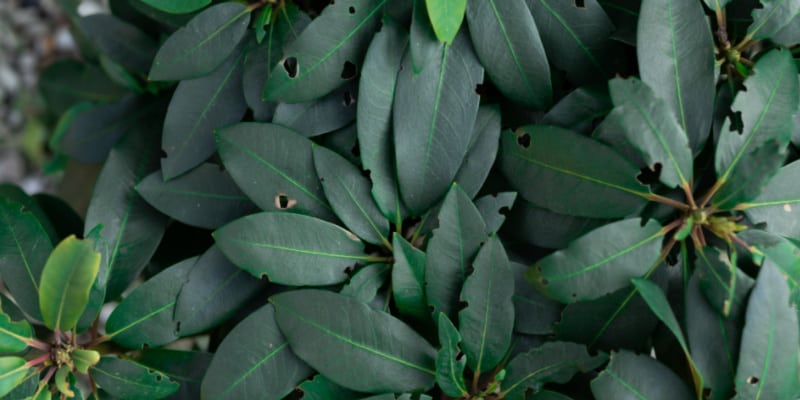
What’s eating my azalea leaves?
Our site is reader supported, this means we may earn a small commission from Amazon and other affiliates when you buy through links on our site.
Various pests and even a few diseases may be eating your azalea leaves or at least giving the appearance that they have been eating your azalea leaves. I talk about bark scales, leafminers and caterpillars here, among other pests. To find out what to do about any of these, also read my Azalea Pests and Diseases guide, as I cover even more pests and especially diseases.
If you have more of an issue with your azalea leaves dropping turning yellow and dropping off, then check this guide here.
Azalea bark scales
These are soft scaled insects. You know you have them more by what they leave behind than by actually seeing them. Look for a clear and sticky substance called honeydew left on the leaves and stems of your azalea leaves. You may also notice a sooty kind of mould there too. In May and June, these pests lay eggs in white egg sacs which they leave in the forks of twigs.
As well as the honeydew and black mould, other symptoms of bark scale infestation include the leaves becoming yellow and twig dieback.
Azalea Caterpillars
These particular caterpillars are black with pale yellow or white spots in rows down their backs. Their legs, head and neck areas are reddish-brown. You can see these insects when they’re fully mature as they reach several centimetres in length. When they’re young, they’re also visible as they hang around in groups.
If left alone, these caterpillars can eat most or all of the foliage of a complete plant. Look for these pests in the late summer and into the autumn. They are best removed by hand but for more serious infestations, you can use a general garden pesticide that is labelled as effective against caterpillars
Azalea leafminers
Look for blotches near the middle rib of your leaves in late spring. Leafminers eat between the upper and the lower sides of the leaves. If there’s enough of them, the leaves become brown and drop off. Mature leafminers are a kind of moth, are about 1cm long and a yellow brown colour.
To be certain if you have these, look inside any leaves whose tips are curled up. The leafminers created this shape with silk so they have protection around them while they eat the leaf.
Leaf gall
This is a disease that can appear as if something is eating your azalea leaves which is why I’ve included it in this guide. Leaf galls look like pale green or white fleshy boils. The plant’s leaves often become curled or deformed in some other way which is why they are sometimes mistaken for something eating the leaves, as many aphids also cause the leaves to curl.
To find out what to do about these problems, and for information on more pests, see Azalea Pests and Diseases.
If you have an issue with drooping leaves then be sure to check this guide out here


